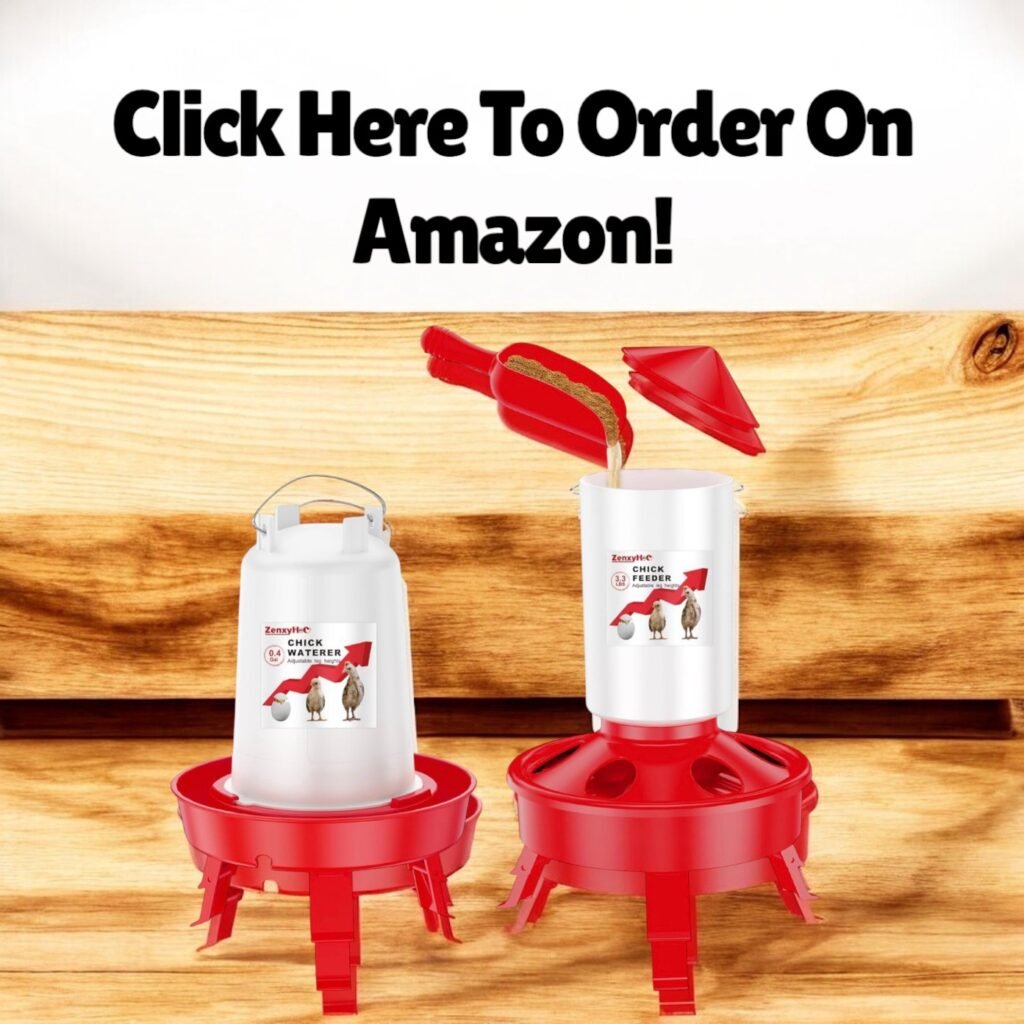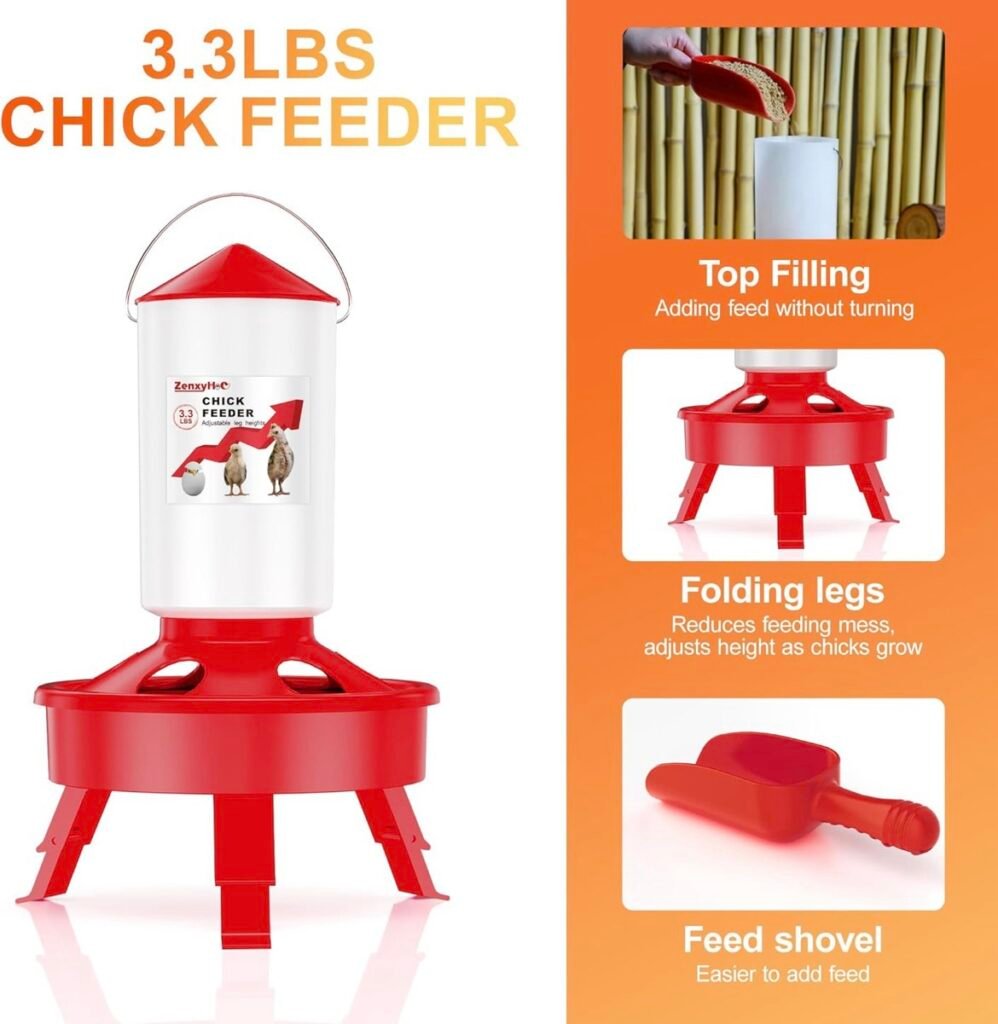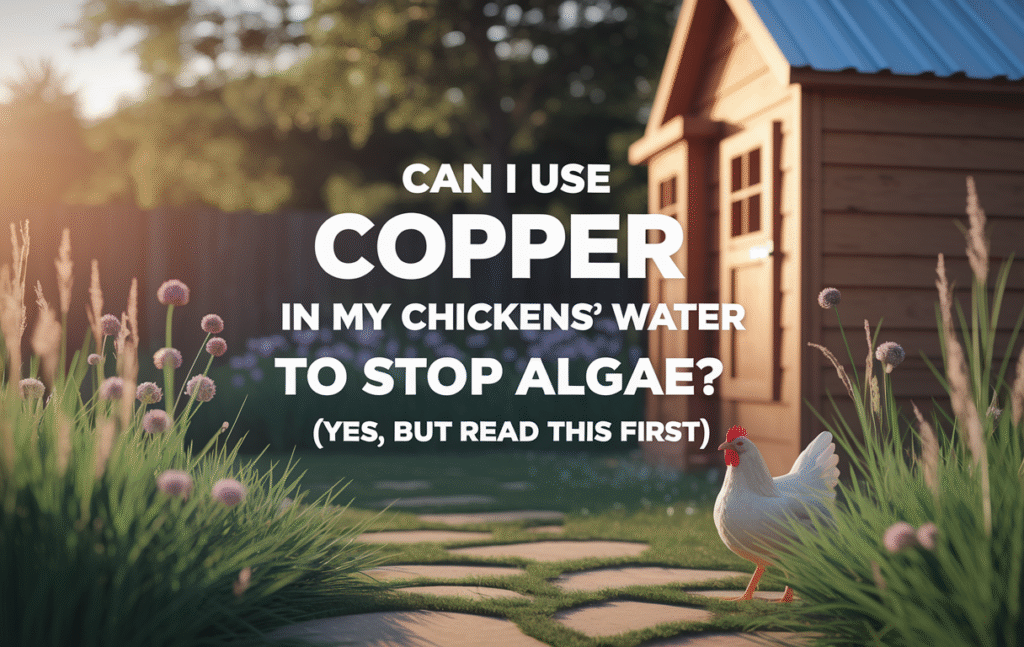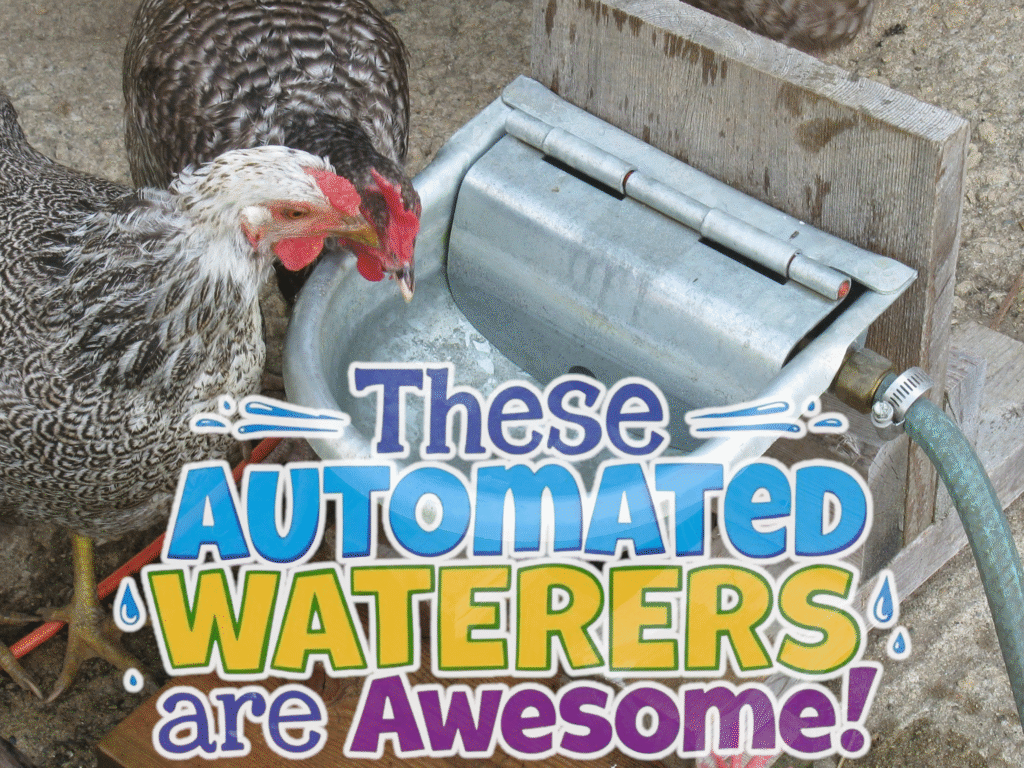
The Big Mess of Raising Chicks (And How to Avoid It)
Raising baby chicks is one of the most rewarding parts of chicken keeping — but it’s also way messier than people expect. I still remember my first brooder setup: feed everywhere, water spilled across the bedding, and tiny chicks wading through chaos like it was a backyard swamp.
That’s when I learned how much smoother everything goes with the right chick feeder and waterer from day one. If you’re still using old bowls, jar waterers, or anything makeshift, trust me — your brooder (and your sanity) will thank you for upgrading.
One of my favorite setups? This top-fill chick feeder and waterer kit with adjustable legs. It’s compact, designed for little chicks, and actually stays upright — which is saying a lot when you’ve got six tiny feathered tornadoes running around.

Why a Dedicated Chick Feeder and Waterer Matters
You might think any old container will do for chicks. But here’s the deal: baby chickens are messy, curious, and not too graceful. They’ll knock over shallow bowls, stand in their water, poop in their feed, and waste half of what you give them.
Here’s why using a proper chick feeder and waterer is a must:
- Prevents spills – keeps bedding dry and chicks from chilling
- Reduces waste – specially shaped trays minimize scratching and kicking
- Keeps water clean – no more soggy feed or gross slime
- Safer height options – adjustable legs keep feed and water at just the right level
- Easier to refill – especially with a top-fill design like this one
If you’re serious about raising healthy chicks and keeping things clean, starting with a smart feeding system is one of the best moves you can make.

What Makes a Chick Feeder “The Best”?
When you start searching for the best chick feeder and waterer, you’ll notice just how many options are out there. Some are plastic, some are metal, some are gravity-fed, and some… well, let’s just say they look like a toddler’s sippy cup slapped onto a plate.
So how do you know what actually works?
Here’s what I look for after going through more setups than I care to admit:
- Top-fill design – You don’t want to flip things upside down just to refill it.
- Easy to clean – Moldy feed and slimy water are chick killers.
- Adjustable height – As chicks grow, your setup should grow with them.
- Stable base – Chicks love tipping things over for fun. A wide base helps.
- Compact but roomy – You want enough capacity for a small flock, but not so huge it takes up half the brooder.
The kit I recommend checks every box: 3.3 lbs of feed, .4 gallons of water, adjustable legs, and even a scoop to keep things tidy. It’s simple, sturdy, and does exactly what you need without costing a fortune.

My Favorite Chick Feeder and Waterer Kit (and Why I Use It)
I’ve tried the cheap ones. I’ve tried the overcomplicated ones. But this red top-fill chick feeder and waterer combo has been the sweet spot for me. It’s not just functional — it’s practical. It holds enough feed and water for a batch of 4 to 8 chicks, refills easily without flipping, and best of all… it stays where I put it.
You can find it right here on Amazon if you want to check it out. I keep mine raised just a bit using the built-in legs so the bedding stays out of the trays, and it really helps cut down on waste and cleanup.
It’s a solid option whether you’re hatching your own chicks, buying from a local farm store, or prepping your brooder in advance.

How to Set Up Your Feeder and Waterer in the Brooder
Setting up a chick feeder and waterer the right way can make your brooder ten times easier to manage. And thankfully, it only takes a couple minutes if you know what to watch for.
Here’s how I do it with my go-to setup:
- Pick a flat, level spot in your brooder that’s not right under the heat lamp — warm water = bacteria party.
- Use the adjustable legs (like on this feeder and waterer kit) to raise it slightly above bedding level. This keeps the shavings out of the trays.
- Keep food and water apart, ideally on opposite ends of the brooder. Chicks tend to kick feed into the water or splash water into the feed if they’re side by side.
- Check twice daily — refill as needed and make sure the water is clean, especially when chicks are tiny.
Bonus tip: If you’re using pine shavings or hemp bedding, place a small tile or tray under the feeder to catch any excess. It makes cleanup way easier, especially during that first week when chicks are extra clumsy.

Common Problems a Good Chick Feeder and Waterer Solves
If you’ve already raised chicks, you probably know the frustrations. And if you haven’t… buckle up. Here’s what tends to happen when you go cheap or DIY with feeding and watering:
- Soaked bedding from tipped-over water bowls
- Wasted feed from chicks scratching it everywhere
- Clogged trays filled with poop or pine shavings
- Slippery messes that lead to pasty butt or splayed legs
- Constant refilling with tiny-capacity containers
That’s why a purpose-built chick feeder and waterer — like this adjustable combo set — is honestly one of the first things I recommend to any new chicken keeper. You’ll save time, reduce waste, and help your chicks stay healthy without needing to babysit them every hour.

How Many Chicks Does This Size Work For?
A big question I had when I first started: “How many chicks can actually share one chick feeder and waterer?” Most kits don’t tell you straight up — and I definitely overbought (and overwatered) that first batch.
Here’s the sweet spot:
- This feeder and waterer kit is ideal for 4 to 8 chicks.
- With 3.3 lbs of feed and 0.4 gallons of water, it’ll get most small backyard broods through at least a full day without needing a refill.
- Once your chicks hit about 4 to 6 weeks, you’ll want to upgrade to a larger setup or add a second kit if you’ve got a bigger flock.
For new chicken keepers raising a modest batch, this is the perfect “no-fuss” size. You won’t be refilling every couple hours, and it won’t take up your whole brooder, either.

Cleaning Tips to Keep Things Safe and Simple
Here’s the not-so-glamorous side of chicken keeping: chicks poop everywhere. If you don’t stay ahead of cleaning your chick feeder and waterer, things can get nasty real quick — and unhealthy for your flock.
Here’s my routine:
- Rinse both trays daily with warm water — no need for soap unless you see slime or buildup.
- Use a bottle brush every few days to scrub the inside of the waterer — it helps prevent algae and bacteria.
- Check the feeder tray for mold or clumped feed, especially during humid weeks.
- Air dry in the sun when possible — UV light helps naturally sanitize!
The kit I use is super easy to clean. The scoop is handy not just for filling the feeder but also for helping you scrape out crumbs or shake off old powdery feed dust before refilling.

What Else You Might Need With Your Feeder and Waterer
Once you’ve got your chick feeder and waterer dialed in, there are a few extras worth having around that’ll make life easier in the brooder:
- Electrolytes or chick probiotics – especially for that first stressful week
- Paper towels or brooder mats – help prevent leg injuries and keep water mess under control
- Mealworm treats – just a few here and there after week two, like these protein-packed goodies
- Thermometer – don’t guess your brooder temp, just check it
- Auto waterer for later – when they outgrow this kit, this automatic waterer setup is a great next step
Prepping your space now with a few of these can help avoid messes, health issues, and frantic last-minute Amazon orders when the chicks are already peeping in your garage.

The Best Chick Feeder and Waterer for Stress-Free Brooding
There’s a lot that goes into raising healthy chicks — heat, bedding, nutrition, space — but having the right chick feeder and waterer is a bigger deal than most people think. It sets the tone for everything else. Less mess. Fewer spills. Happier, healthier chicks.
After trying more setups than I’d care to admit, the top-fill red chick feeder and waterer kit I use now is my go-to. It just works — and keeps working — through the chaos of early chick days.
So if you’re gearing up for a new brood, do yourself a favor: start with a setup that makes your job easier and your chicks’ lives better. That’s exactly what this little kit does.
As an Amazon Associate we earn from qualifying purchases through some links in our articles.



